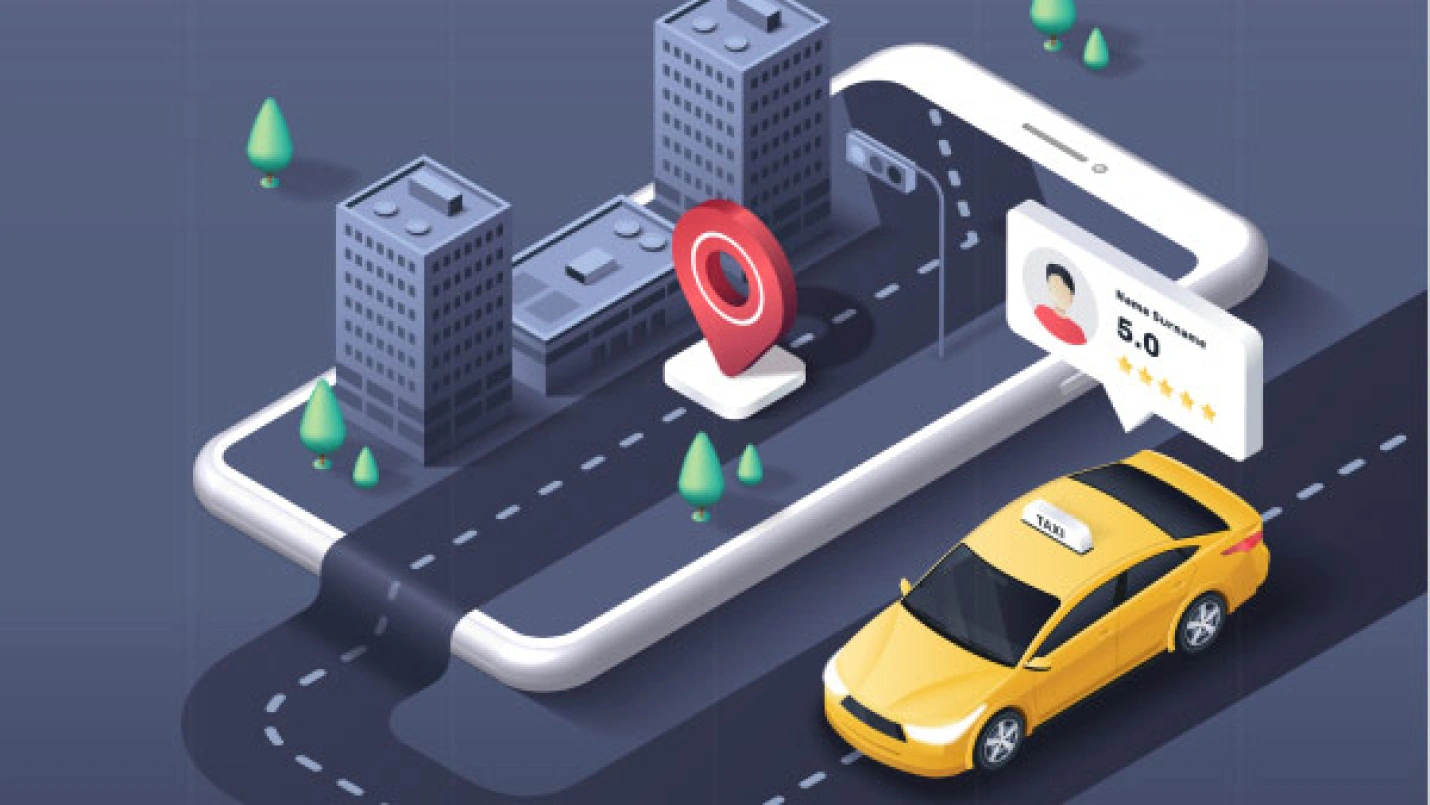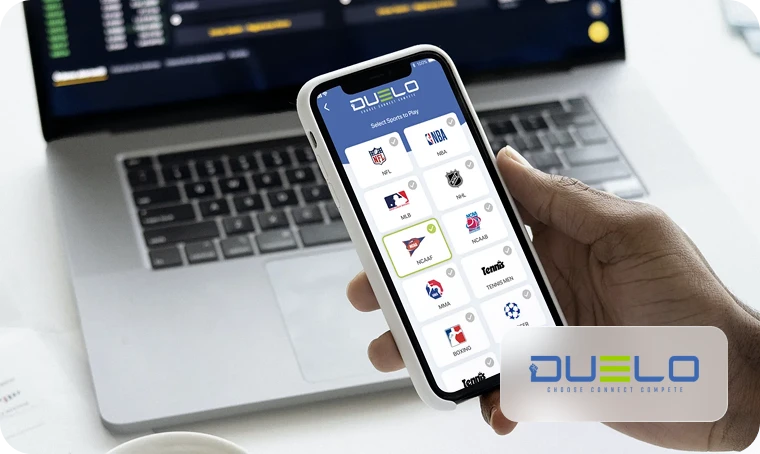Summary: Ride-sharing is an evolving industry. If you’re looking at creating an app for ride-sharing, what worked for Uber and Lyft years back may not work for you. Being prepared and getting your expectations right is the only key to success. This blog answers all the questions you might want before jumping on the bandwagon.
Commuting from one place to another with convenience is a priority for all. The ride-sharing app business will flourish with an expected worth of 185.1 billion by 2026. In an earlier post, we discussed some noteworthy examples of ride-sharing apps.
Building a ride-sharing app is an excellent option if you want a great business idea. However, with Uber, Lyft, Grab, and many players in the lead, you need help to make a mark in the market. You have to match and surpass the experience these giants offer to their customers. It is only possible if you follow all the fundamental steps to developing the ride-sharing app. Grab a coffee and read on as we explore all these steps and their significance in the ride-sharing app development process:

We respect your privacy. Your information is safe.
A step-by-step guide to building a ride-sharing app
Step 1: Market research
Market research is critical as it lays the foundation for successful mobile apps. The ride-sharing market is evolving. You must rise beyond the convenience of booking a ride and offer users a remarkable experience. It is possible only through market research.
Here are the questions you must ask during this phase:
- What is my target audience?
- What are the problems that existing applications fail to solve?
- How is my app bridging the gap between the current market and the users’ needs?
- What is my app’s unique selling proposition?
Answering these questions will help you make informed decisions about building the right ride-sharing app.
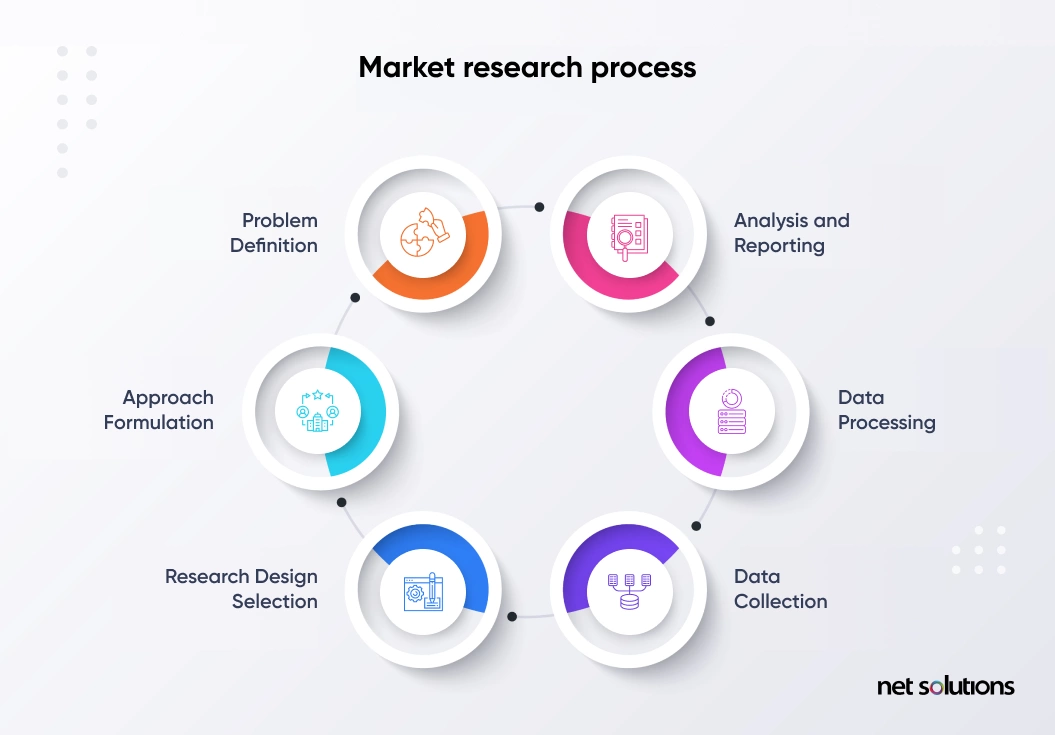
Step 2: Identify key features of the ride-sharing app
The best way to stay afloat and ride higher in social commuting is to have a one-in-a-million rideshare app embedded with feel-right features.
So, what are the features that a ride-sharing app must have? Let’s find out:
1. Must-have features for consumers
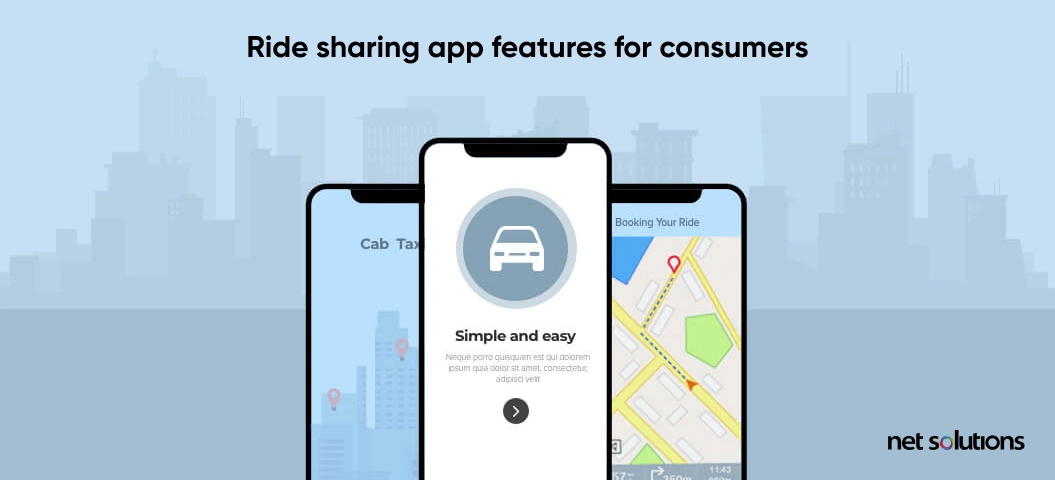
- User-Friendly Sign-up Portal: Account creation using Facebook or Google or even a sign-up utilizing the contact number would add to the user experience at the very first instance.
- Finding a Ride With Ease: The riders should be able to enter the pick-up and drop-off locations on the search box provided. It would improve the ride search time and its ETA (Estimated time of arrival), irrespective of the location of other riders.
- Integration of Real-Time Tracking: Instant activation of the real-time tracking system is a must in ride-sharing apps. It eliminates confusion and inconvenience, especially in cases where many riders are involved.
- The Split Payment System: The fare should also be equally distributed in shared rides. The payment should depend upon the distance traveled to avoid any additional expense for a rider.
- Information about other passengers: By maintaining transparency on the car-sharing app, you would gain your users’ trust as it will offer them a sense of security. Hence, keep the passenger details visible to all travelers.
- Facility to cancel the ride without any Hassle: A rider should never feel it as an obligation to hop in a cab just because they booked it. If they want to cancel the ride at any time, they should be able to do it.
- App Help Center to Report Bad Experiences: In case of any mishap/lost item/driver behavior issues/ payment issues, the riders should be able to report directly through the app.
- Push Notifications to Keep Users Updated: Your app should be able to send across (active) ride details, ride start notifications, and fare details at the end of a ride. You should also communicate any running discount offers through these push notifications.
2. Must-have features for drivers
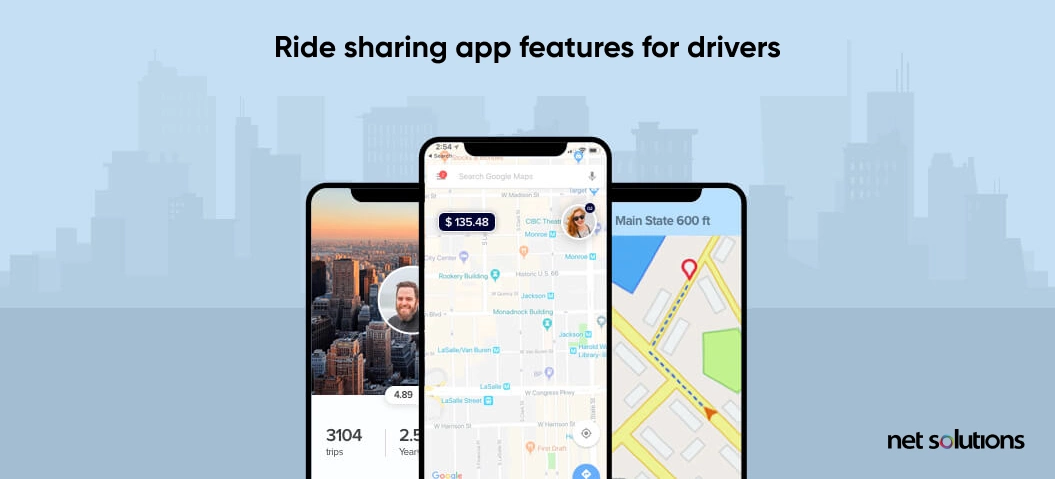
- Driver-Friendly Sign-up Portal: The ride-sharing app for the driver should provide easy account creation without making them feel lost. Google and Facebook login or contact number registration options will be helpful.
- Ability to Accept/Reject Ride Request: Both riders and drivers are essential for the business. Hence, you must offer drivers an option to accept or reject rides at their convenience.
- Every Rider’s Trip Information: When multiple riders travel together, drivers are likely to get confused. Hence, the interface should communicate every rider’s trip information.
- Built-in Navigation for Optimized Directions: Including map navigation on the driver’s side will help the drivers reach each rider’s location in time and help them maneuver through the shortest route possible.
- Integrated System for Receiving Payments: Your ride-sharing app should integrate all payment options. This way, they can accept payments conveniently.
- Easy Access to the Driver Dashboards: Be it the driver’s overall rating, rides completed, earnings, or deduction details, the interface should maintain a see-through structure.
- Easy Plan-Ups for the Day: Your ride-sharing app must have a trip planner. It would help drivers analyze hourly trends, check out upcoming promotions, set driving time limits, and even generate the last rider’s waybill.
3. Almost essential features
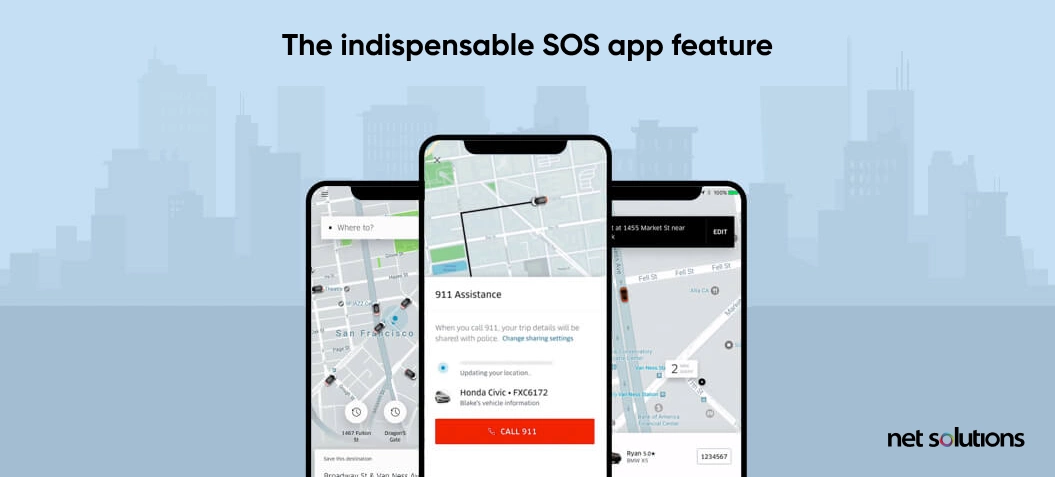
Keeping the features mentioned above aside, here are some trending app features that have turned the tables for the ride-sharing business in the mobile application development process.
- SOS Buttons in Case of Emergencies: Both drivers and riders should be able to report emergencies in real-time to ensure immediate counteract actions. Assured safety is a crucial element that contributes to creating the best rideshare apps of all time.
- Exciting discounts for New/Loyal Users: Offering new user discounts or free rides happens is the best marketing strategy to attract new users. You could also offer a referral bonus, as this is a proven way to extend the user base from hundreds to millions quickly.
- Ability to Schedule a Ride in Advance: Scheduling rides in advance will prevent last-minute frustrations and help you plan trips without hassle.
- Multilingual App: To make your local app available to everyone, irrespective of where they come from, you must make it multilingual.
- Ability to Mark Favorite Locations: Entering the same pick-up and drop-off locations can frustrate daily commuters. Your app should allow them to mark their favorite locations to ensure hassle-free booking,
- Facility to Add Tip to the Drivers: A token of appreciation can make someone’s day. If a rider finds a driver’s service satisfactory or a driver goes the extra mile for the rider, a tip-off facility should be available.
- The app should work even in lost connections: It becomes impossible for drivers to access app features in low-network areas. To avoid this, you must ensure that they can start and end trips even in case of lost internet connections.
Step 3: Choose a development approach
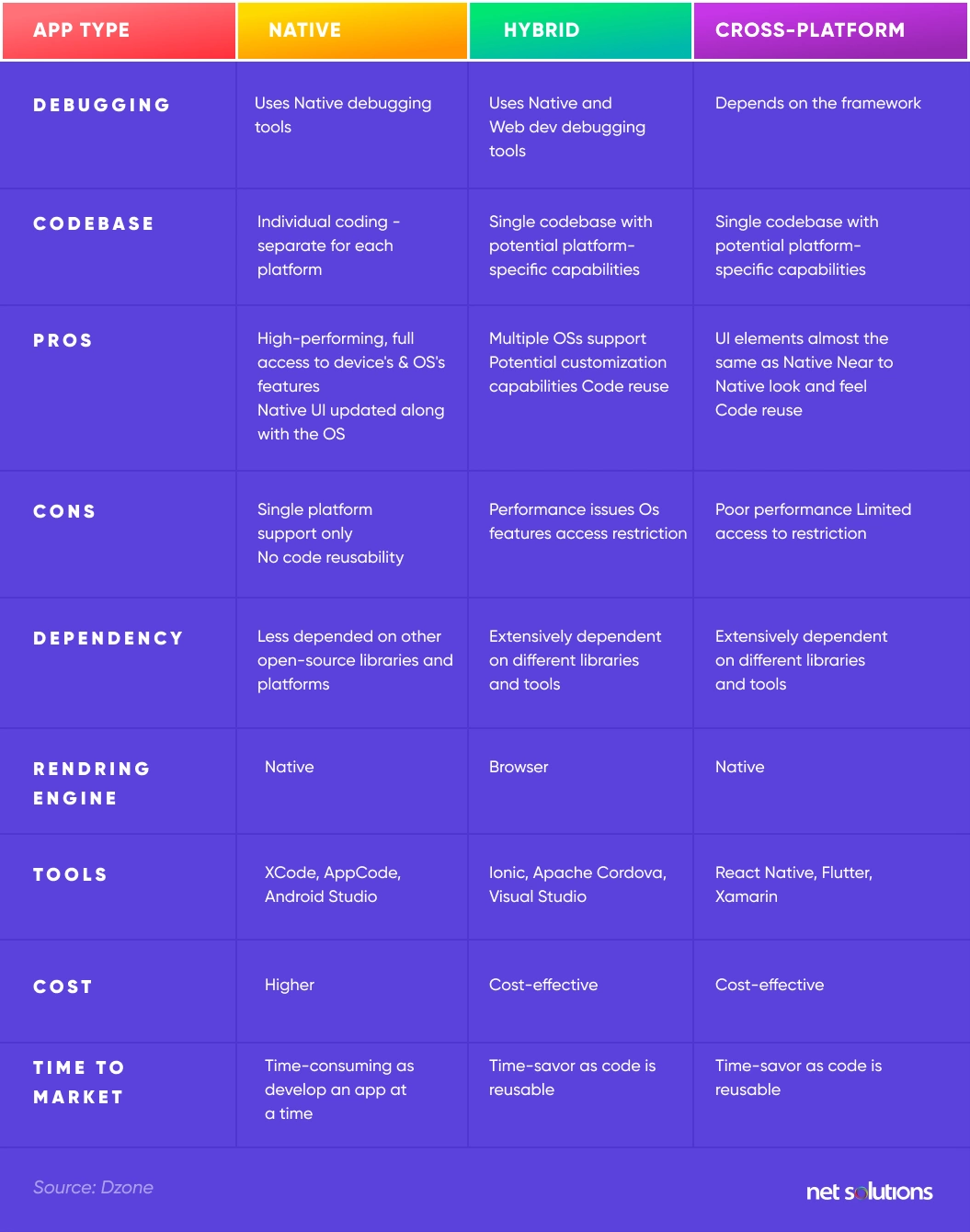
Your ride-sharing app’s success also depends on your approach to developing it. You can create a ride-sharing app in three ways: native, cross-platform, and hybrid.
- Native app development is about creating apps that run on Android and iOS platforms. Such apps are feature-rich but on the expensive side.
- In cross-platform app development, we develop apps for several platforms (Android, iOS, and web) using a single codebase. It results in low app development costs and faster time-to-market. However, such apps lack the user experience, and functionality native apps offer.
- Hybrid app development is about using web technologies like HTML5, CSS, and JavaScript to create apps that can seamlessly run across multiple platforms.
- Such apps offer a native-like user experience. But they don’t match the level of cross-platform apps.
You can decide whether to build the ride-sharing app using native, cross-platform, or hybrid app development, depending on your business needs, budget, or the nature of your project.
Step 4: Build an MVP of your ride-sharing app
Once you have decided on the development approach, you can build either a fully-fledged ride-sharing app or its MVP. Building an MVP is wiser as it helps you test the waters before you go all in, saving you from heavy loss if the idea doesn’t pan out.
While building an MVP of your ride-sharing app, ensure that you only include the necessary features. The idea at this stage is only to define the value proposition and attract potential customers and investors. You can further refine it as you gather feedback from the later stages.
Step 5: Launch & test the MVP of Your Ridesharing App
After creating an MVP for your rideshare app, the next step is to launch and test it with your target audience. This stage is essential because your target audience can tell you things about your product that you might’ve missed out on at earlier stages.
At the launch and test MVP stage, closely listen to what your potential consumers have to say. Their feedback will offer you the much-needed direction to refine your product and ensure you’re on the right track to creating a fully functional product with numerous iterations.
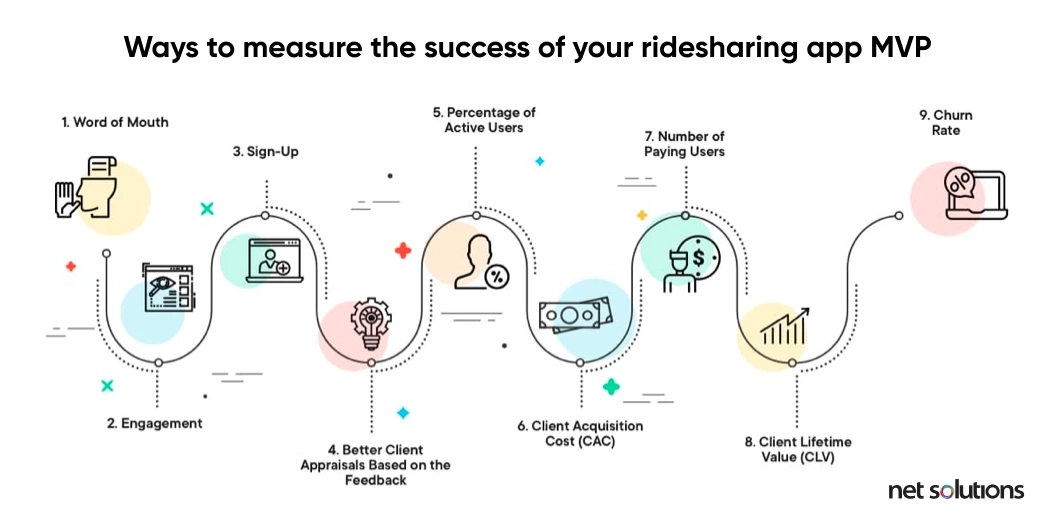
Once you’ve gathered enough feedback, you can iterate your MVP further to develop it into a fully-fledged app.
How much does a ride-sharing app cost
A ride-sharing app can cost from $25,000 to $40,000, depending on the level of complexity and the features involved. Some ride-sharing apps can even go as high as $100,000- $150,000.
The following factors can also influence the ride-sharing app development costs:
- Choice of the platform: Native apps are high-quality but expensive compared to cross-platform apps.
- Team members: The cost of a ride-sharing app increases with the number of team members. More developers, designers, and project managers will also increase the price.
- The project’s tech stack: Some frameworks, APIs, and technologies cost more than others. Hence, the cost of your ride-sharing app may also differ depending on the technology stack.
- The geographical location of developers: Developers from developed countries like the USA, Canada, and the UK charge more than developers from India. The choice of developers depending on these countries can also increase or decrease your app development costs.
While building your ride-sharing app, you must keep all these factors in mind to ensure it meets expectations while not inflating your budget.
How can Net Solutions help you in developing a ride-sharing app?
Net Solutions takes immense pride in offering digital solutions that exceed client expectations. Over the last 22 years, we have built high-performing apps across various sectors for clients worldwide. The apps we made have carved out a special place in the hearts of our customers.
If you are looking for a mobile app development company to turn your ideas into reality, we can help you establish yourself in the ever-expanding ride-sharing industry by creating an excellent app. You can decide on the features you want to include and the app development route you want to take. Contact us with your app idea, and we’ll support you throughout its development.
Frequently Asked Questions
Building a ride-sharing app can take several months to several years, depending on factors like the app’s complexity, the size of the development team, and the resources available. A basic ride-sharing app can take several months to develop, while a more complex app with additional features may take over a year.
A ride-sharing app can make money in several ways, such as:
- Commission: The app can take a percentage of each fare as a commission for connecting the driver and passenger.
- Advertising: The app can sell advertising space to businesses, which can be displayed to riders and drivers within the app.
- Premium features: The app can offer premium features to riders and drivers for an additional fee, such as the ability to choose a specific driver or access to luxury vehicles.
- Partnerships: The app can partner with other businesses, such as car rental companies or hotels, to offer exclusive deals and discounts to riders.
- Delivery: The app can expand its services to include food and package delivery, which can generate additional revenue.
Many ride-sharing apps can use a combination of these monetization methods.
Ride-sharing apps connect drivers with passengers through a mobile application. Here’s how they work:
1. A passenger requests a ride.
2. The app uses GPS technology to match the passenger with a nearby driver.
3. The driver accepts the ride (if available) and navigates the passenger to their location.
4. Once the ride is complete, the passenger rates the driver and pays through the app. The driver can also rate the passenger.
Finally, the app calculates the fare and transfers it to the driver after deducting its commission.
Ride-sharing apps are convenient and affordable and offer multiple riding options to customers. However, the lack of privacy regulations and concerns is real.

